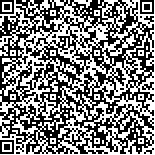| 引用本文: | 邓帆,王学雷,厉恩华,蔡晓斌,黄进良,胡砚霞,姜刘志.1993-2010年洞庭湖湿地动态变化.湖泊科学,2012,24(4):571-576. DOI:10.18307/2012.0410 |
| DENG Fan,WANG Xuelei,LI Enhua,CAI Xiaobin,HUANG Jinliang,HU Yanxia,JIANG Liuzhi.Dynamics of Lake Dongting wetland from 1993 to 2010. J. Lake Sci.2012,24(4):571-576. DOI:10.18307/2012.0410 |
|
| |
|
|
| 本文已被:浏览 8996次 下载 3389次 |

码上扫一扫! |
|
|
| 1993-2010年洞庭湖湿地动态变化 |
|
邓帆1,2, 王学雷1, 厉恩华1, 蔡晓斌1, 黄进良1, 胡砚霞1,2, 姜刘志1,2
|
|
1.中国科学院测量与地球物理研究所, 武汉 430074;2.中国科学院研究生院, 北京 100049
|
|
| 摘要: |
| 利用不同时相遥感影像,结合实地调查,采用决策树分类方法提取洞庭湖湿地信息,完成洞庭湖四期湿地类型分布图;同时分析洞庭湖湿地植被群落动态变化特征、驱动因素以及湿地变化的影响.结果表明,17 a来洞庭湖滩地植被分布和面积发生了明显变化,林滩地面积净增367.88 km2,变化比例为1127.51%,分布范围向洲滩主体扩展,成为主要滩地类型;芦苇滩地面积减少44.09 km2,草滩地面积增加2.99 km2,变化比例分别为-5.80%和0.40%.洞庭湖湿地的变化一方面受洞庭湖泥沙淤积和滩地植被演替的影响,另一方面也受到人类活动干扰的影响.天然湿地植被的破坏,特别是人工种植芦苇和滩地造林在一定程度上改变了洞庭湖湿地生态系统原有的结构和功能.为有效保护洞庭湖湿地,要合理开发洲滩资源,保护天然湿地植被,合理规划和控制滩地造林. |
| 关键词: 遥感 湿地变化 驱动因素 洞庭湖 决策树分类方法 |
| DOI:10.18307/2012.0410 |
| 分类号: |
| 基金项目:国家自然科学基金项目(41171426,40871251);湖北省自然科学基金重点项目(2011CDA075);中国气象局气候变化专项项目(CCSF201205);中国科学院知识创新工程重要方向项目(KZCX2-YW-141)联合资助 |
|
| Dynamics of Lake Dongting wetland from 1993 to 2010 |
|
DENG Fan1,2, WANG Xuelei1, LI Enhua1, CAI Xiaobin1, HUANG Jinliang1, HU Yanxia1,2, JIANG Liuzhi1,2
|
|
1.Institute of Geodesy and Geophysics, Chinese Academy of Sciences, Wuhan 430074, P. R. China;2.Graduate University of Chinese Academy of Sciences, Beijing 100049, P. R. China
|
| Abstract: |
| Using multi temporal satellite images of remote sensing, wetland information was extracted by decision tree classification method combined with field surveying and four Lake Dongting's wetland type distribution maps were drawn out. This paper mainly analyzes the dynamic characteristics of wetland vegetation, driving factors and their influence on the wetland ecosystem in this region. Results show that vegetation community distribution and proportion changed obviously. In the past 17 a, forest area increased by 367.88 km2 at a rate of 1127.51%. The forest area extended to main part of beaches and became the main vegetation type of Lake Dongting. Reed area decreased by 44.09 km2, while sedge land area increased by 2.99 km2, with change rate of -5.80% and 0.40%, respectively. This change resulted from both natural environment evolution and human activities. The destruction of natural wetland vegetation, especially planted reed and poplar, destroyed the structure and function of Lake Dongting wetland ecosystem. In order to protect the Lake Dongting wetland effectively, we must rationally exploit bottomland resource, protect natural wetland vegetation and make good management on shoal forestation. |
| Key words: Remote sensing wetland change driving factors Lake Dongting decision tree classification method |
|
|
|
|